2023 Reports 5 to 9 of the Auditor General of Canada to the Parliament of Canada
Report 9—Processing Applications for Permanent Residence—Immigration, Refugees and Citizenship Canada
At a Glance
Overall, we found that despite recent efforts to improve processing times and reduce backlogs that worsened during the pandemic, most people applying for permanent residence to Canada were still waiting a long time for Immigration, Refugees and Citizenship Canada to process their applications, and people applying to refugee programs were the most affected. On average, privately sponsored refugees waited 30 months for a decision while overseas spouses or common‑law partners waited 15 months to be reunited with their partners in Canada. While processing times improved in most of the programs we examined, they continued to exceed the department’s service standards for most applications in 2022.
At the end of 2022, large backlogs of applications remained across all permanent resident programs that we examined. Although Immigration, Refugees and Citizenship Canada announced in 2016 that it was moving to capacity-based processing to help reduce backlogs, we found that the department continued to assign application workloads to offices without assessing whether they had enough resources to process them. For example, the Dar es Salaam (Tanzania) office had an assigned workload that was 5 times greater than the Rome (Italy) office, even though both offices had a comparable number of staff.
Some applications waited in the queue for long periods of time after they were initially submitted by applicants. This was most frequently the case with refugee applications, which waited an average of 15 to 20 months before receiving an initial assessment. We also found differences in the size and age of application backlogs by country of citizenship in 7 of the 8 permanent resident programs we examined and that offices with large backlogs of refugee applications have been under-resourced for many years.
Immigration, Refugees and Citizenship Canada prioritized the processing of backlogged applications in some programs and introduced online application portals to receive and more quickly assess applications across others. However, the portals remain unavailable to most people applying for refugee programs, who have no choice but to submit their applications electronically through unsecured email.
In addition, Immigration, Refugees and Citizenship Canada did not monitor the implementation of its automated eligibility-assessment tool to assess whether the tool was reducing overall processing times for all applicants as intended or to identify and resolve any unintended differential outcomes for applicants. The department did not reallocate resources so that processing times would remain roughly equivalent whether applications were assessed by the tool or manually by an officer. It is important that Immigration, Refugees and Citizenship Canada knows whether the use of new tools have unintended differential outcomes for applicants and works to reduce negative effects when they arise.
Key facts and findings
- In 2022, Canada met its admission target of 431,645 new permanent residents. In 2025, it expects to welcome 500,000. Immigration, Refugees and Citizenship Canada processes permanent resident applications across 87 offices with approximately 2,600 staff in Canada and abroad.
- By the end of 2022, about 99,000 refugee applications were still waiting to be processed. Processing times for refugee programs were almost 3 years on average. Many of these applicants will wait years for a decision in the current processing environment.
Why we did this audit
- Immigration, Refugees and Citizenship Canada has committed to reducing long wait times and backlogs for applicants to permanent resident programs. Prompt processing supports the government’s priorities of economic growth, family reunification, and refugee resettlement—a humanitarian value.
- Immigration, Refugees and Citizenship Canada’s efforts to improve processing and reduce backlogs should benefit program applicants regardless of the office where their application is sent for processing.
- Immigration, Refugees and Citizenship Canada should know whether its tools are working as intended, monitor for unintended negative effects on applicants, and reduce these effects when they arise.
Highlights of our recommendations
- To provide applicants with clear expectations of the likely timelines for a decision, Immigration, Refugees and Citizenship Canada should establish achievable and reliable service standards for the processing of permanent resident applications, including for its refugee programs. In addition, online information on expected processing times should be provided for all permanent resident applications and consider the volume and age of applications already in its inventories.
- To improve consistency of application processing times across its offices, Immigration, Refugees and Citizenship Canada should match assigned workloads with available resources, and it should support these decisions with reliable information on the available capacity within its offices. It should act immediately to address application backlogs that have accumulated in certain offices with limited capacity.
- To support timely processing for all applicants, Immigration, Refugees and Citizenship Canada should examine differential outcomes in processing times related to the implementation of automated decision‑making tools and reduce these disparities to the extent possible, including by reallocating sufficient resources to applications directed to manual processing.
Please see the full report to read our complete findings, analysis, recommendations and the audited organizations’ responses.
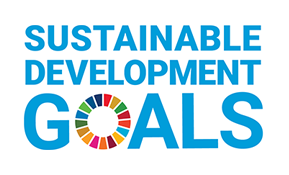

Efficiently and promptly processing immigration applications supports the United Nations’ Sustainable Development Goal 10— Reduced Inequalities—specifically target 10.3, which relates to equal opportunities and outcomes, and target 10.7, which relates to the orderly, safe, regular, and responsible migration and mobility of people.
Visit our Sustainable Development page to learn more about sustainable development and the Office of the Auditor General of CanadaOAG.
Exhibit highlights
Permanent resident admission targets increased under the Immigration Levels Plan
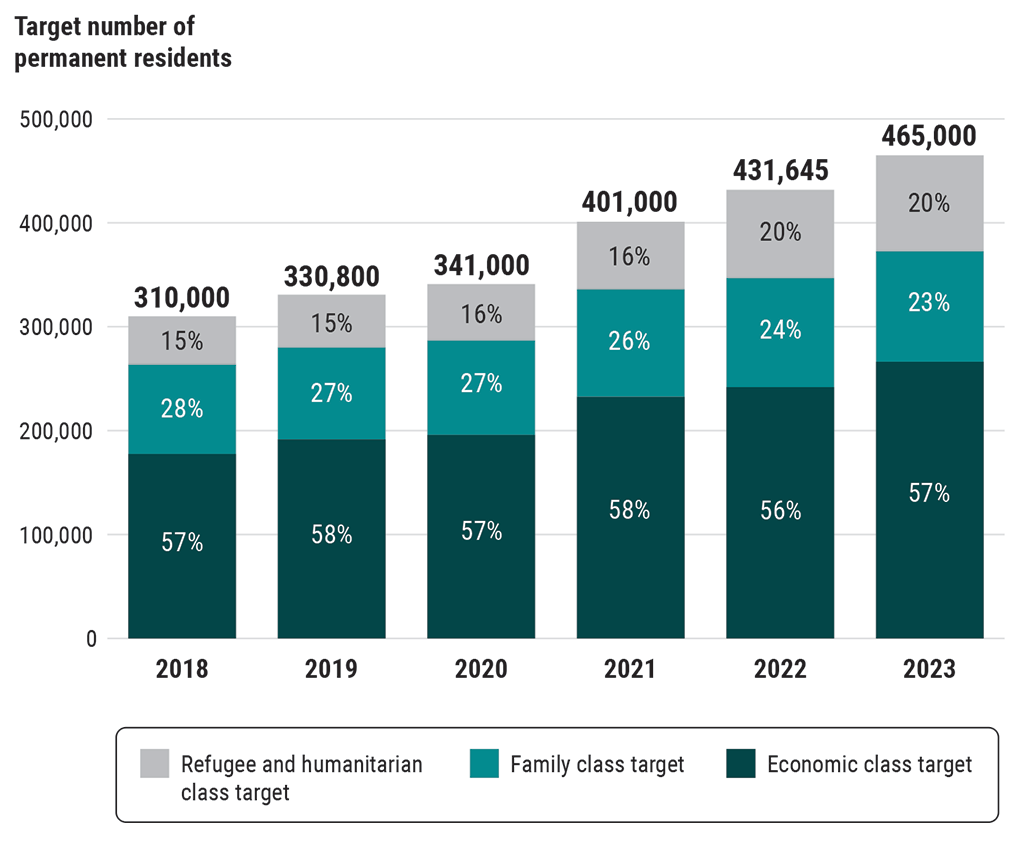
Source: Based on information from Immigration, Refugees and Citizenship Canada
Text version
This chart shows the admission targets from 2018 to 2023 for the 3 categories of permanent resident programs: refugee and humanitarian class, family class, and economic class. The target number for permanent resident admissions increased every year during this 6‑year period.
In 2018, the admissions target was 310,000. Of this, 57% was for economic class programs, 28% was for family class programs, and 15% was for refugee and humanitarian class programs.
In 2019, the admissions target was 330,800. Of this, 58% was for economic class programs, 27% was for family class programs, and 15% was for refugee and humanitarian class programs.
In 2020, the admissions target was 341,000. Of this, 57% was for economic class programs, 27% was for family class programs, and 16% was for refugee and humanitarian class programs.
In 2021, the admissions target was 401,000. Of this, 58% was for economic class programs, 26% was for family class programs, and 16% was for refugee and humanitarian class programs.
In 2022, the admissions target was 431,645. Of this, 56% was for economic class programs, 24% was for family class programs, and 20% was for refugee and humanitarian class programs.
In 2023, the admissions target was 465,000. Of this, 57% was for economic class programs, 23% was for family class programs, and 20% was for refugee and humanitarian class programs.
Overview of Immigration, Refugees and Citizenship Canada’s application process for permanent residence
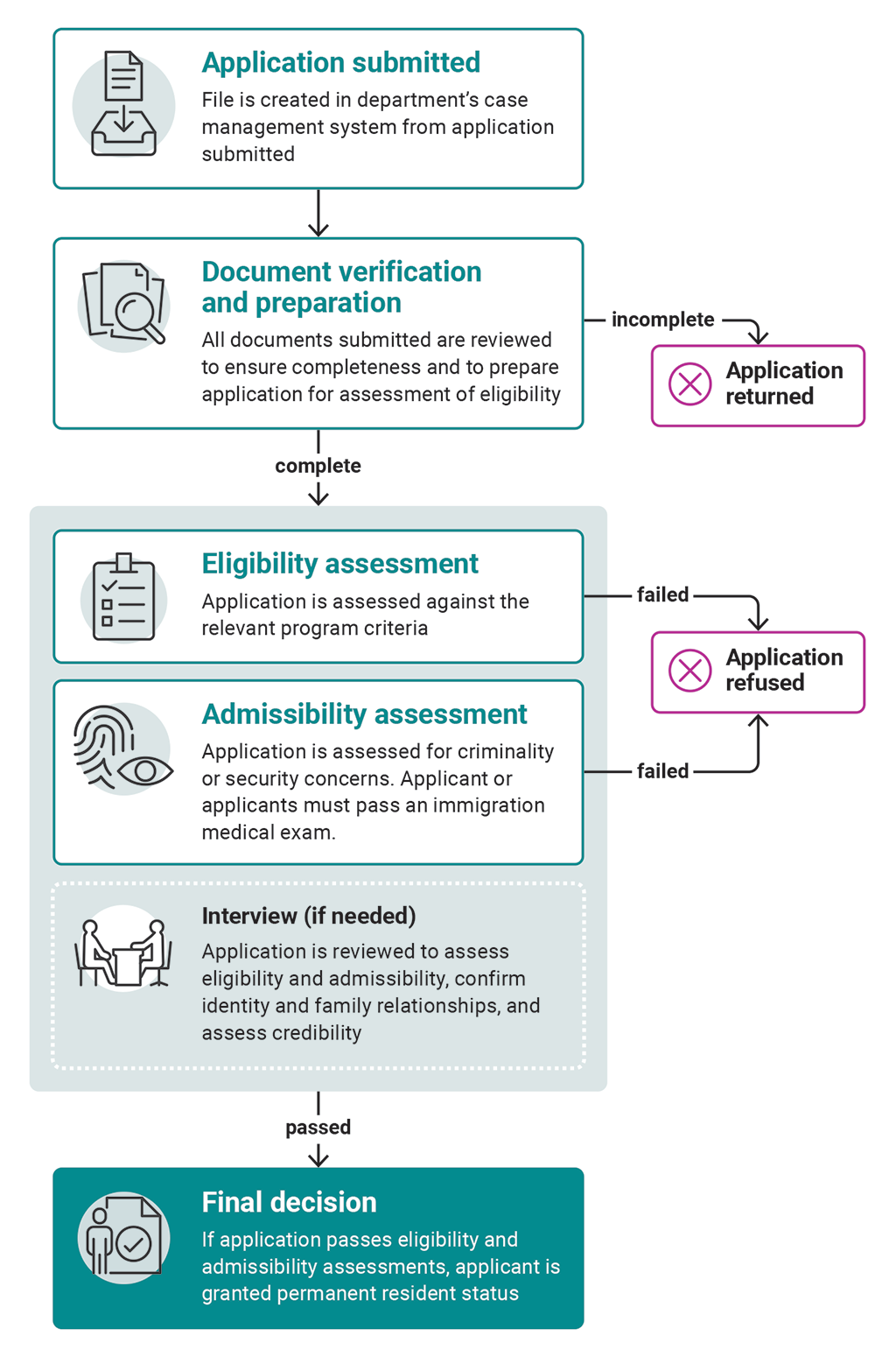
Source: Based on information from Immigration, Refugees and Citizenship Canada
Text version
This flow chart shows an overview of Immigration, Refugees and Citizenship Canada’s application process for permanent residence.
First, a file is created in the department’s case management system from the application submitted.
All documents submitted are then reviewed to ensure completeness and to prepare the application for assessment of eligibility. At this stage, if the documents are incomplete, the application is returned. If they are complete, the application moves on to the eligibility assessment.
During the eligibility assessment, the application is assessed against the relevant program criteria.
If the application passes the eligibility assessment, it is then assessed for admissibility. The application is assessed for criminality or security concerns, and the applicant or applicants must pass an immigration medical exam.
If an application fails either the eligibility assessment or the admissibility assessment, the application is refused. If it passes both steps, it moves on to the interview, if needed.
If an interview is needed, the application is reviewed to assess eligibility and admissibility, confirm identity and family relationships, and assess credibility.
Final decision—If the application passes eligibility and admissibility assessments, the applicant is granted permanent resident status.
Processing times decreased for economic and family class applicants but not for refugee and humanitarian class applicants
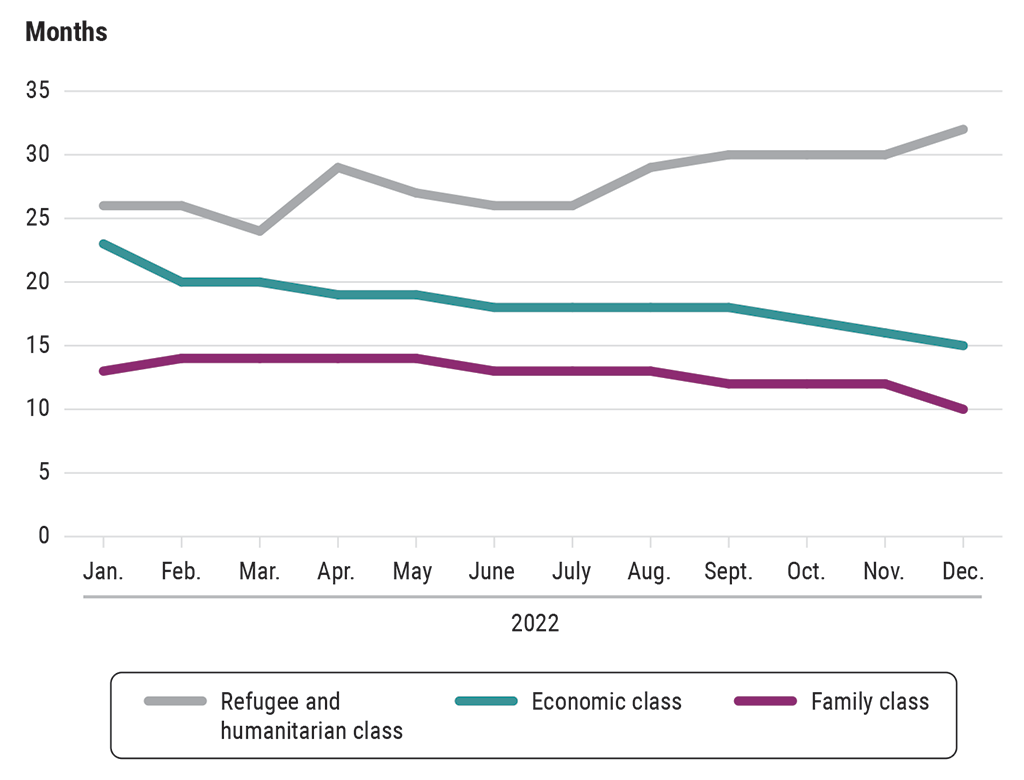
Source: Based on information from Immigration, Refugees and Citizenship Canada
Text version
This chart shows the processing times for refugee and humanitarian class, economic class, and family class applicants. Processing times are shown in months from January to December 2022.
Refugee and humanitarian class applicants experienced the longest processing times for their applications, followed by economic class applicants, and family class applicants.
For refugee and humanitarian class applicants, processing times increased between January 2022 and December 2022:
- In January and February 2022, the average processing time was 26 months.
- In March 2022, the average processing time decreased to 24 months.
- In April 2022, the average processing time increased to 29 months.
- In May 2022, the average processing time decreased to 27 months.
- In June 2022, the average processing time decreased to 26 months and remained at that rate for July.
- In August 2022, the average processing time increased to 29 months.
- In September 2022, the average processing time increased to 30 months and remained at that rate for October and November.
- In December 2022, the average processing time increased to 32 months.
For economic class applicants, processing times decreased between January 2022 and December 2022:
- In January 2022, the average processing time was 23 months.
- In February 2022, the average processing time decreased to 20 months and remained at that rate for March.
- In April 2022, the average processing time decreased to 19 months and remained at that rate for May.
- In June 2022, the average processing time decreased to 18 months and remained at that rate for July, August, and September.
- In October 2022, the average processing time decreased to 17 months.
- In November 2022, the average processing time decreased to 16 months.
- In December 2022, the average processing time decreased to 15 months.
For family class applicants, processing times decreased between January 2022 and December 2022:
- In January 2022, the average processing time was 13 months.
- In February 2022, the average processing time increased to 14 months and remained at that rate for March, April, and May.
- In June 2022, the average processing time decreased to 13 months and remained at that rate for July and August.
- In September 2022, the average processing time decreased to 12 months and remained at that rate for October and November.
- In December 2022, the average processing time decreased to 10 months.
Applications automatically deemed eligible were finalized faster than those that were not
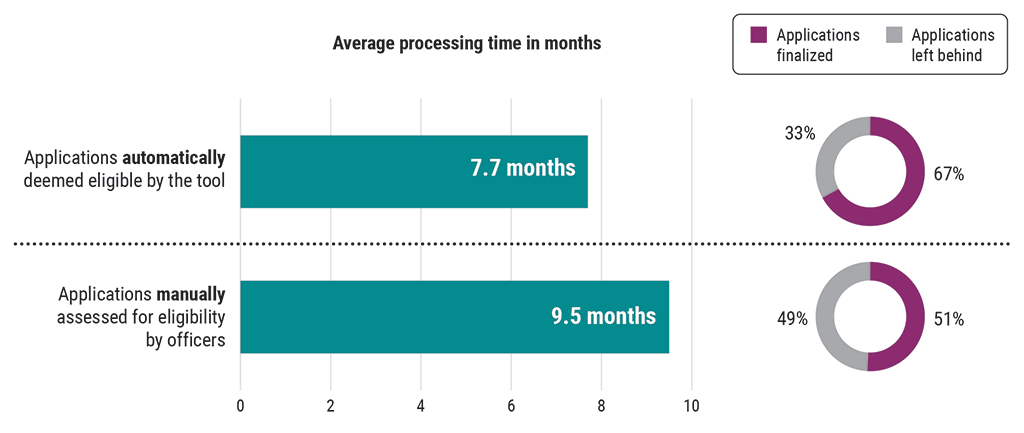
Source: Based on data from Immigration, Refugees and Citizenship Canada
Text version
This chart shows the difference in processing times for applications that were automatically deemed eligible by the tool and those that were manually assessed for eligibility by officers. The processing time of applications that were automatically deemed eligible by the tool was about 2 months faster than those that were manually assessed for eligibility by officers.
Applications automatically deemed eligible by the tool were processed in an average of 7.7 months. This meant that 67% of applications were finalized and 33% were left behind.
Applications manually assessed for eligibility by officers were processed in an average of 9.5 months. This meant that 51% of applications were finalized and 49% were left behind.
Infographic

Text version
Processing Applications for Permanent Residence
Despite recent efforts to improve processing times and reduce backlogs, most permanent residence applicants were still waiting a long time for Immigration, Refugees and Citizenship Canada to process their applications, with vulnerable refugee applicants being the most affected.
Highlights
The admission target of 431,645 new permanent residents was met in 2022.
Permanent resident applications are processed across 87 offices with about 2,600 staff located in Canada and abroad.
Backlogs
Large and aging application backlogs persisted at the end of 2022. About one third of the applications in the backlog were finalized. And it could take up for 4 years for an application to be finalized.
We also found differences in the size and age of application backlogs by country of citizenship in 7 of the 8 permanent resident programs we examined.
At the end of 2022, large and aging backlogs of applications remained for all permanent resident programs. Some applications waited in the queue for long periods of time after they were initially submitted by applicants, contributing to the backlog.
Office capacity
Different processing capacities in different offices contributed to the backlogs. The department assigned application workloads to offices without assessing whether they had sufficient resources to process the applications. For example, an office with limited capacity could finalize a small number of applications regardless of the size of the workload or backlog, while an office with more resources could finalize more applications.
We found higher backlogs and longer processing times for refugee applicants in sub‑Saharan Africa because these offices were often under-resourced. This resulted in different wait times for applicants based on where their application was sent to be processed.
Online application portals and automated tools
Online application portals remain unavailable to people applying for refugee programs.
The department introduced automated tools to speed up application processing, but better monitoring is needed to address differential wait times for applicants.
All people applying for permanent residency should benefit from government efforts to improve application processing.
Related information
Tabling date
- 19 October 2023
Related audits
- 2019 Spring Reports of the Auditor General of Canada to the Parliament of Canada
Report 2—Processing of Asylum Claims - 2017 Spring Reports of the Auditor General of Canada to the Parliament of Canada
Report 3—Preventing Corruption in Immigration and Border Services
Parliamentary hearings
